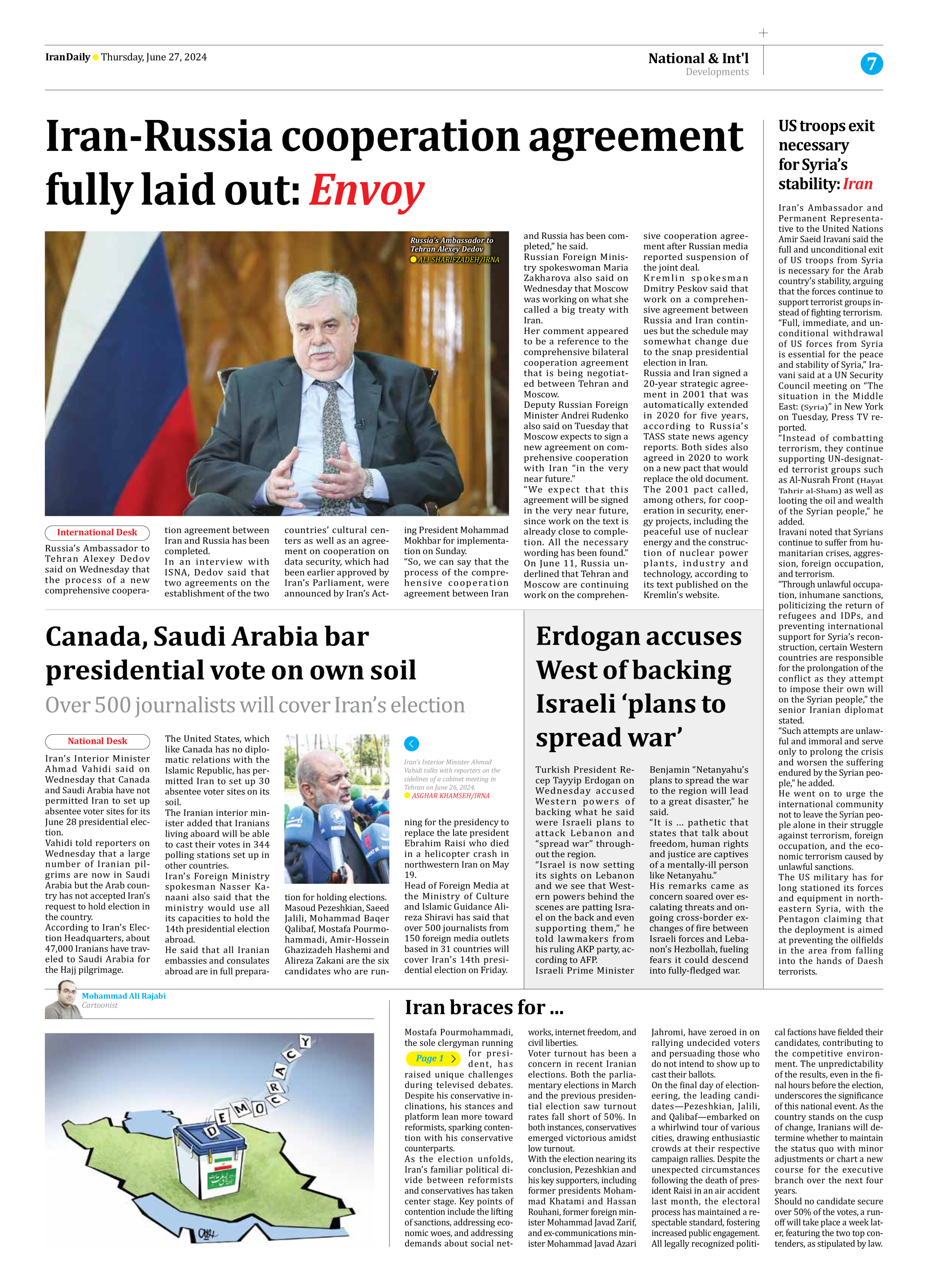
Iran braces for ...
Page 1
Mostafa Pourmohammadi, the sole clergyman running for president, has raised unique challenges during televised debates. Despite his conservative inclinations, his stances and platform lean more toward reformists, sparking contention with his conservative counterparts.
As the election unfolds, Iran’s familiar political divide between reformists and conservatives has taken center stage. Key points of contention include the lifting of sanctions, addressing economic woes, and addressing demands about social networks, internet freedom, and civil liberties.
Voter turnout has been a concern in recent Iranian elections. Both the parliamentary elections in March and the previous presidential election saw turnout rates fall short of 50%. In both instances, conservatives emerged victorious amidst low turnout.
With the election nearing its conclusion, Pezeshkian and his key supporters, including former presidents Mohammad Khatami and Hassan Rouhani, former foreign minister Mohammad Javad Zarif, and ex-communications minister Mohammad Javad Azari Jahromi, have zeroed in on rallying undecided voters and persuading those who do not intend to show up to cast their ballots.
On the final day of electioneering, the leading candidates—Pezeshkian, Jalili, and Qalibaf—embarked on a whirlwind tour of various cities, drawing enthusiastic crowds at their respective campaign rallies. Despite the unexpected circumstances following the death of president Raisi in an air accident last month, the electoral process has maintained a respectable standard, fostering increased public engagement.
All legally recognized political factions have fielded their candidates, contributing to the competitive environment. The unpredictability of the results, even in the final hours before the election, underscores the significance of this national event. As the country stands on the cusp of change, Iranians will determine whether to maintain the status quo with minor adjustments or chart a new course for the executive branch over the next four years.
Should no candidate secure over 50% of the votes, a runoff will take place a week later, featuring the two top contenders, as stipulated by law.







